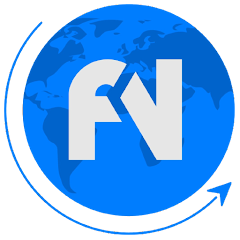Healthcare professionals are suffering
as the demands of the job—coupled with enormous recordkeeping and paperwork burdens—are causing a burnout crisis in our healthcare system. The bad news is that the problem is multi-layered and complex. The good news is that AI and automation seem to hold the near-term promise of helping with many of those problem layers.
In a recent survey, 40% of healthcare organizations reported suffering from increased employee attrition, a figure that outpaces any other industry surveyed.
Worse, the industry is facing a hiring squeeze. Understaffing and burnout combine to create a vicious circle where pressure on workers increases as understaffing spreads, leading to more burnout, which leads to more attrition and even more burnout. And the cycle continues indefinitely. The same survey found that existing employees bear 40% of the burden when onboarding a new employee in healthcare, with the direct manager taking the brunt of it. It’s a crisis that’s been compounding since the pandemic as doctors, nurses, and other medical professionals leave the field at unprecedented rates, creating unfilled talent gaps for employers.
The Bureau of Labor Statistics estimates that one in eight workers in the U.S. is in healthcare, and projections estimate that that figure is only set to grow, with at least 1.8 million job openings over the next decade; in other words, the scale of the problem is massive.
Hospital systems have been eager to backfill their empty positions, but that process is easier said than accomplished. Healthcare is a notoriously challenging industry to staff up in, as the raw complexity of the workforce—a wide array of highly skilled and entry-level workers, as well as some of the most highly tested, certified, and credentialed professionals on the planet—makes compliance in the highly regulated environment difficult.
It’s all creating a crisis — that threatens the integrity of the U.S. healthcare system.
Emerging AI and tech solutions hold the potential to expand worker productivity and are poised to be part of the solution. There are patient-facing solutions in diagnostics, treatment personalization, and patient management and monitoring. Critically, AI platforms are entering the marketplace that can automate some of the soul-sucking recordkeeping burden that faces frontline physicians and nurses.
Those solutions can help manage healthcare records, process insurance claims, and help maintain workforce and regulatory compliance. However, according to the survey, the most significant strategic focus for healthcare organizations is something altogether removed from the clinical side: onboarding.
Onboarding is a key but often overlooked part of improving any business’s attrition rate. Hiring is never just the role of HR either: it’s a time cost for managers, coworkers, accounting, and security, all of whom play a role in bringing a new hire up to speed, whether it’s making sure that an ID card works, or that the new employee knows where the bathroom is.
Too often, the onboarding process for new hires is disjointed, making new employees feel like they’re playing catchup and never fully settled in at their new workplace. The added burden of onboarding exhausts existing employees, while the disconnect with their new place of work scares off new hires.
Modern technology solutions can ease some of the day-to-day demands on talent acquisition and talent management professionals.
The adoption curve isn’t apparent, though – healthcare, ironically, is an industry that can be slow to adopt new technologies. Despite being on the cutting edge of broader scientific discovery, healthcare organizations report the highest lead time when adapting to change.
Most healthcare companies take over three months to align the people, technology, and processes they need to meet new objectives. Healthcare systems are inherently hostile to change. Concerns about how these changes may impact clinical and compliance needs make administrators wary about upsetting the system.
Without the flexibility afforded to other less regulated industries, most software does not support healthcare as required to support this industry’s needs. Survey respondents from the healthcare industry reported the second-lowest adoption of AI and machine learning technologies in the workplace.
Part of healthcare’s hesitancy can likely be attributed to complexity. In order to fully onboard a new employee and create a productive workforce, Rival’s benchmark of healthcare industry employers found that new hires have to go through an average of 113 steps, from verifying employee certifications to completing health tests and ensuring compliance with myriad regulations. It’s a daunting task for any organization, let alone those already stretched thin.
But it’s precisely because of this complexity that healthcare could benefit from AI assistance. Having an automated system that streamlines and guides new hires through each such step is a massive improvement that supports compliance and ensures that new hires are engaged and contributing to the team as quickly as possible.
Modernized HR workflows and AI technology offer a streamlined pathway for HR teams, especially when prioritizing the needs of new employees. Imagine how much better an HR employee’s time can be spent if they no longer need to send a flurry of emails to every manager and coworker reminding them to set up introductory meetings with a new hire. Imagine how much less stressful it would be for managers to know their new hire is cleared to work on their first day because all the paperwork has been completed.
Over time, these systems can dramatically ease some of the administrative burden healthcare professionals are struggling with. Leading systems can manage the entire employee lifecycle, expediting g role transitions, ensuring continuous training, and facilitating development paths that can improve employee retention and satisfaction.
Healthcare’s burnout crisis is a cancer in our healthcare system, and ignoring it will not make it go away. AI and automation-driven technology is the key to building future resilience in our healthcare industry.
The post Can Tech-driven End-to-end HR and Recruiting Systems Succeed in Challenging Labor Markets, Such as Nursing? first appeared on Daily Nurse.


